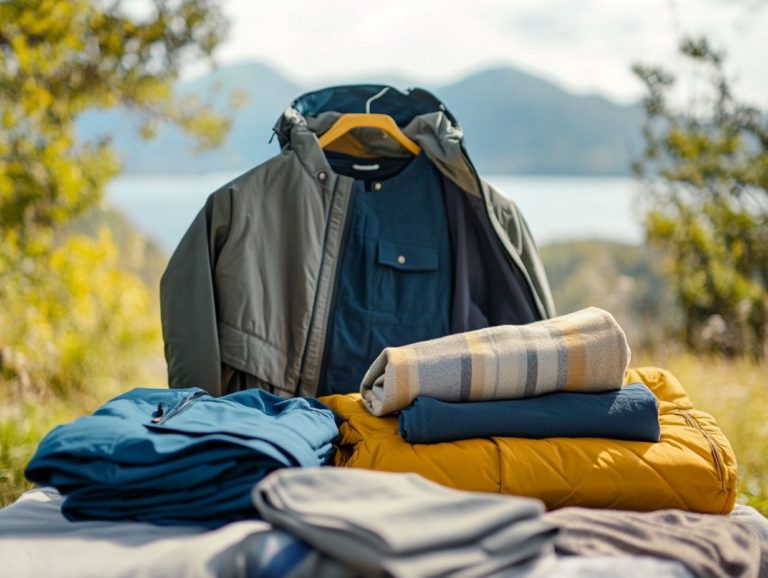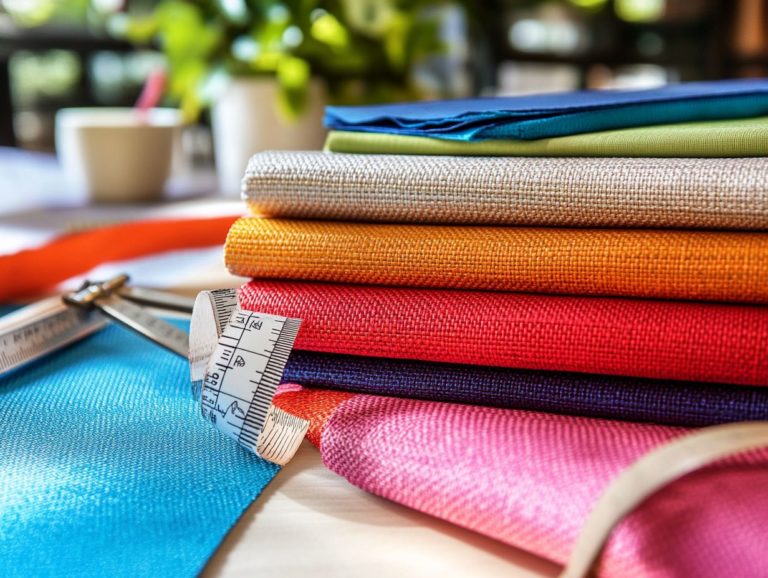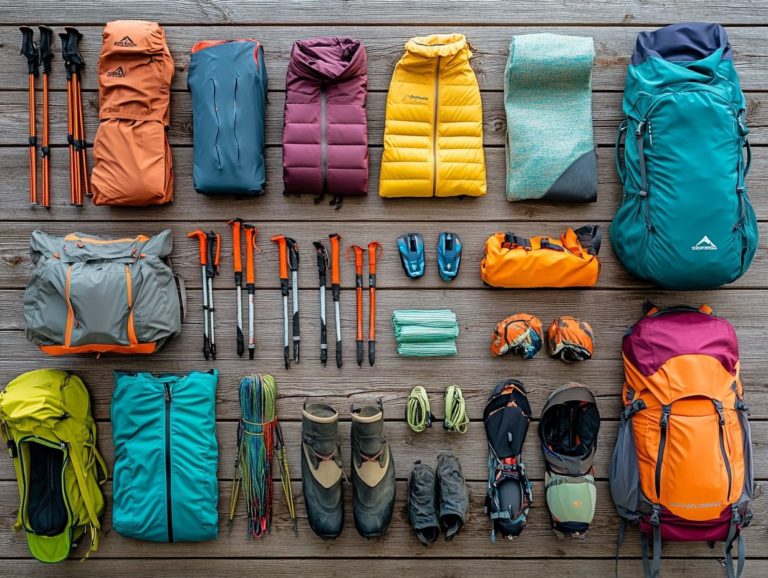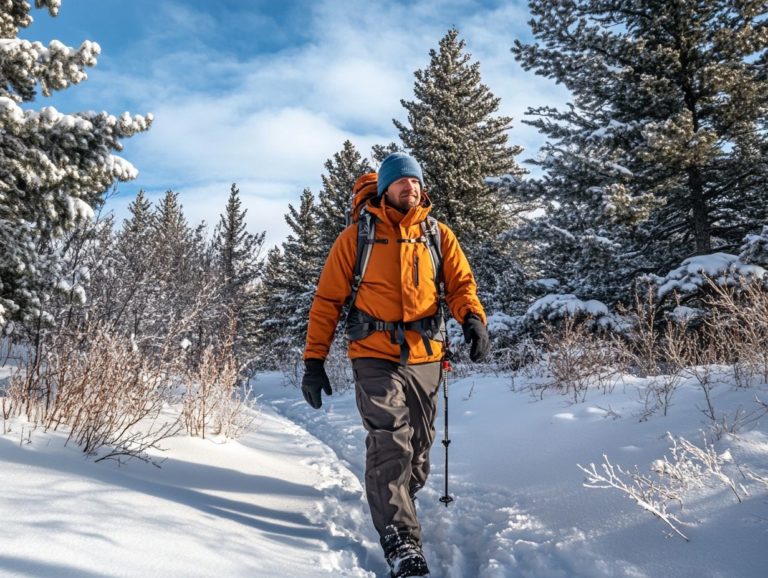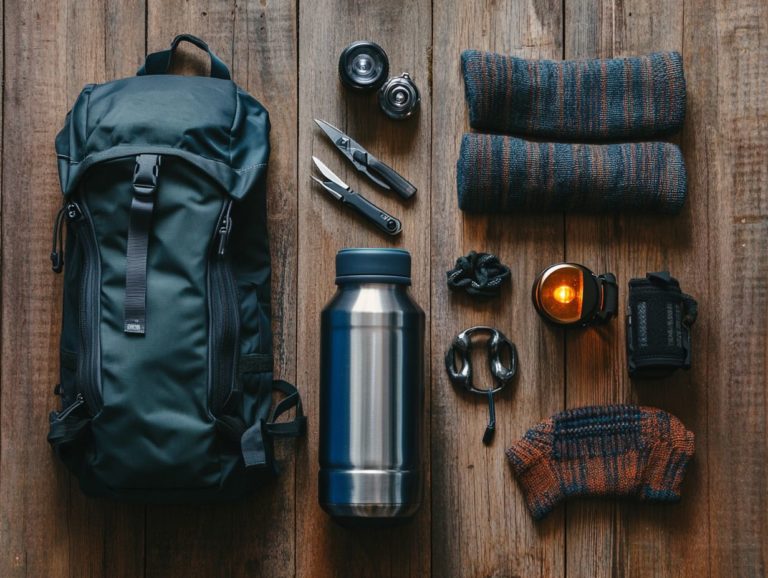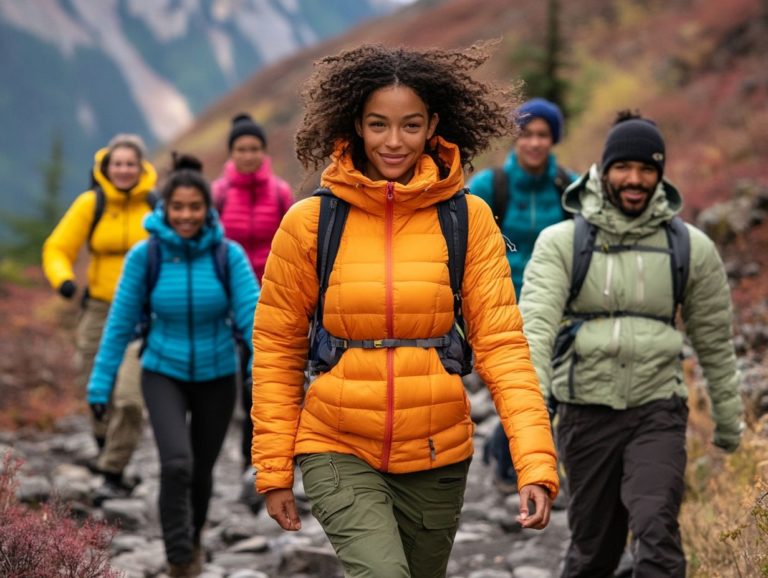Choosing the Right Socks for Outdoor Activities
Choosing the right pair of socks can transform your outdoor adventures. Proper socks significantly enhance both performance and comfort while protecting your feet from injuries.
Your choice of socks can transform how you experience hiking, camping, and other activities, ensuring that you stay comfortable throughout the day.
The right socks not only protect against blisters but also promote foot health by ensuring breathability and moisture control. Choosing the correct size and style is equally important.
Prepare to enhance your outdoor pursuits with the perfect pair!
Contents
- Key Takeaways:
- Importance of Proper Socks for Outdoor Activities
- Fabric and Material Considerations
- Fit and Comfort
- Choosing Socks for Specific Activities
- Frequently Asked Questions
- What factors should I consider when choosing the right socks for outdoor activities?
- What type of material is best for outdoor activity socks?
- What is the ideal thickness for outdoor activity socks?
- Do I need specialized socks for specific activities?
- Should I choose socks with cushioning or without?
- How can I ensure a proper fit for my outdoor activity socks?
Key Takeaways:
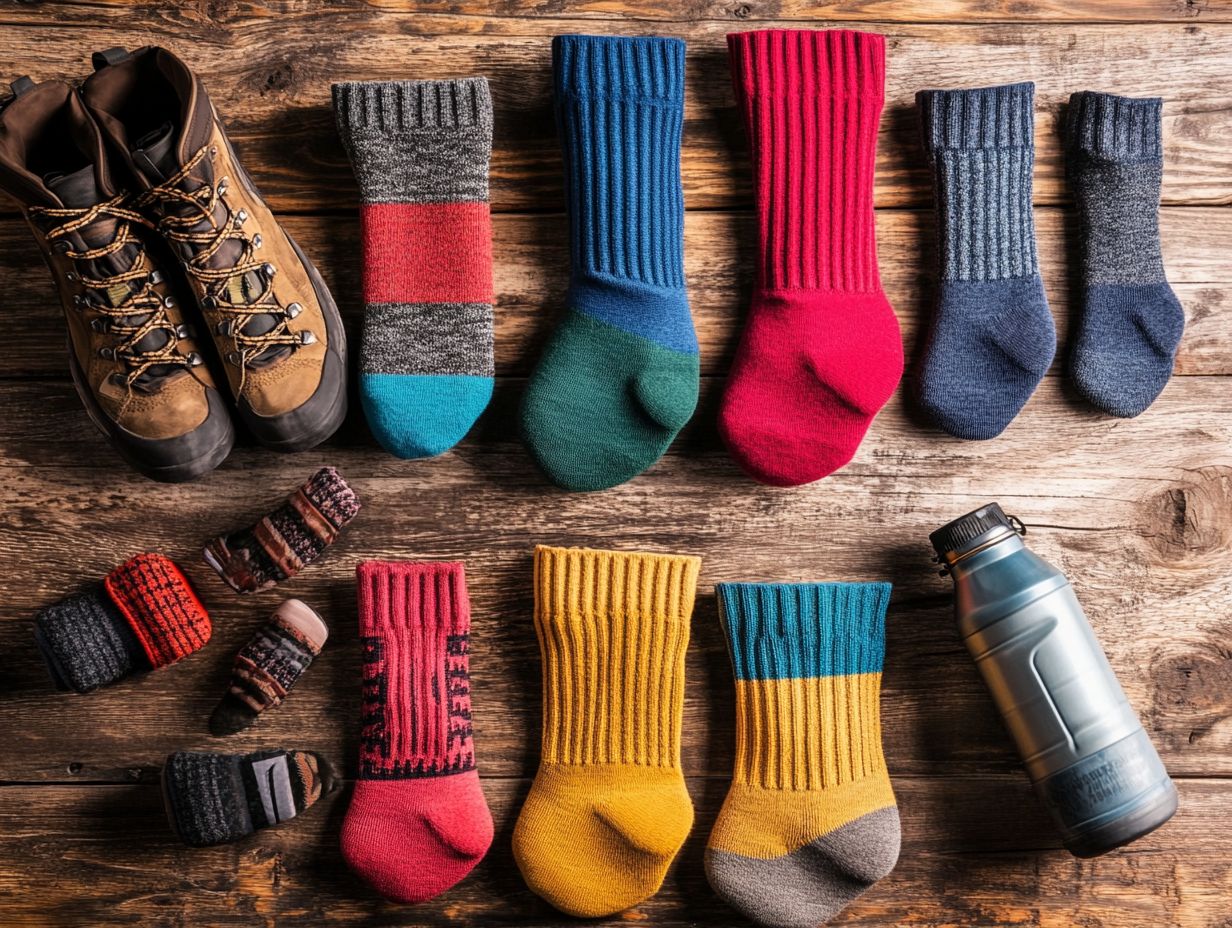
- Proper socks are essential for performance and comfort during outdoor activities. They help prevent blisters and injuries.
- Consider the fabric based on the activity. Moisture-wicking materials like wool or synthetic blends keep your feet dry.
- Fit and comfort are key factors in choosing socks. Get the proper size and look for features like arch support and cushioning.
Importance of Proper Socks for Outdoor Activities
Wearing the right socks is essential for outdoor activities. They enhance performance and comfort while safeguarding your feet.
The right socks protect against blisters and help maintain a healthy and enjoyable outdoor experience. Both moisture control and breathability are crucial.
Impact on Performance and Comfort
The right socks significantly impact your performance and comfort during outdoor activities. They influence how you feel throughout the day.
Proper socks allow you to focus on your activity without the distraction of discomfort. Cushioning provides the necessary support to absorb shock and reduce fatigue.
Choosing between ankle, crew, and knee-high socks depends on personal preference and the specific activity. Ankle socks offer breathability during climbs, while knee-high options provide extra warmth on cold excursions.
Fabric and Material Considerations
Selecting the right fabrics for your socks is crucial for comfort and performance during outdoor activities. Each material has unique advantages catered to various uses.
Opting for durable and breathable socks will ensure your feet remain comfortable and supported during any adventure.
Choosing the Right Fabric for the Activity
Select the right fabric based on the specific outdoor activity. Each activity requires different levels of support and protection.
For hiking, materials that pull moisture away from your skin are essential. They keep your feet dry and reduce the risk of blisters. Lightweight blends with merino wool or synthetic fibers offer warmth without bulk, crucial for chilly environments.
If you’re running, prioritize breathable, stretchy fabrics that promote ventilation and flexibility. Managing sweat is especially important in warmer conditions.
Consider the intensity of your activity, as it influences sock thickness and cushioning. Intense workouts may need padded support, while lighter jogs might suit a minimalist design.
Pairing these fabric features with your outdoor gear enhances overall comfort and performance.
Benefits of Moisture-Wicking Materials
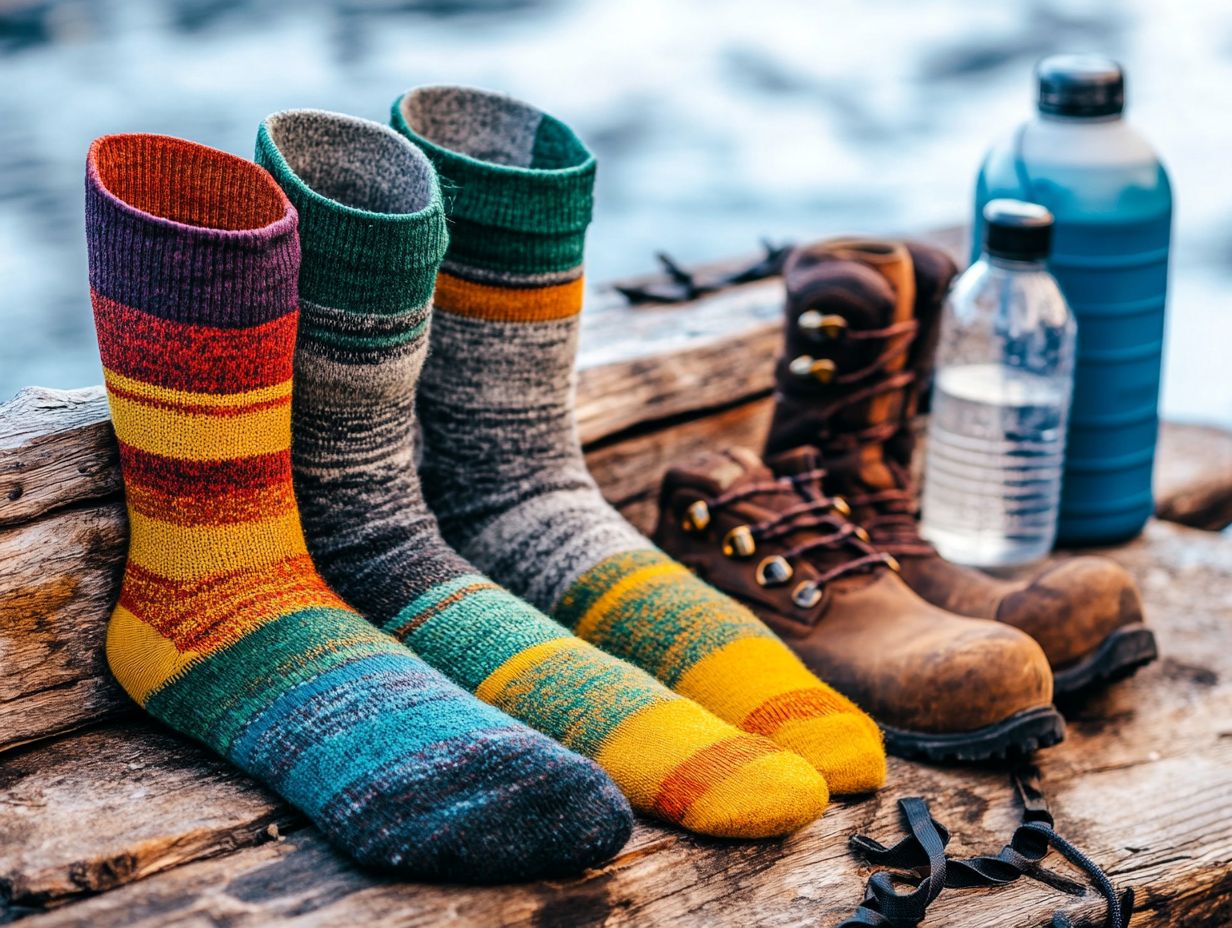
Moisture-wicking materials draw sweat away from your skin. They provide benefits that elevate foot health and overall outdoor performance. This is particularly important for athletes’ feet.
These high-tech fabrics not only keep your feet dry but also help prevent blisters, especially during demanding activities like running or hiking. Consider synthetic fibers such as polyester and nylon, commonly found in the sock designs of leading brands like Asics and lululemon. These materials reduce friction and enhance breathability, ensuring your feet remain comfortable and protected, even under pressure.
By investing in moisture-wicking socks, such as breathable socks or compression socks, you can concentrate on your performance without the nagging discomfort. Imagine the freedom of tackling any trail with confidence!
Fit and Comfort
Achieving the perfect fit and comfort in your socks is essential. An improper fit can lead to discomfort and even injuries during outdoor activities, ultimately affecting your overall foot health.
Prioritizing the right socks is not just about comfort; it s a crucial step in ensuring your feet stay happy and healthy on all your adventures.
Proper Sock Size and Fit
Finding the right sock size and fit is crucial for your comfort during outdoor activities. Socks that are either too tight or too loose can lead to discomfort, blisters, and a noticeable dip in performance.
Choosing the correct sock size enhances your overall foot support and significantly impacts how effectively you can engage in various sports or leisure activities. A well-fitting sock hugs the contours of your foot, providing essential cushioning and reducing friction against your shoes.
This alignment helps prevent common foot ailments, allowing you to concentrate on your performance rather than the irritation caused by ill-fitting gear. To achieve the best fit, consider measuring your foot size while standing, as feet tend to expand slightly.
When opting for different styles, like ankle, crew, or knee-high socks, be mindful of sizing variations to cater to different activities. This attention to detail will ensure optimal comfort and support with every stride.
Features for Comfort and Support
Key features in socks, such as cushioning and support, profoundly enhance your comfort as an outdoor enthusiast, transforming your overall experience during various activities.
Different types of cushioning can be customized to provide extra padding in essential areas like the heel and ball of your foot, effectively reducing impact whether you re hiking or running. Arch support, another vital feature, helps maintain proper foot alignment, alleviating discomfort as you navigate rugged terrain.
The materials employed think moisture-wicking fabrics, merino wool, and synthetic blends are crucial for temperature regulation and breathability, ensuring your feet remain dry and comfortable throughout your adventures.
You can also choose options that suit your personal preferences, such as crew or ankle height socks, or even travel socks, allowing you to select the most suitable design for your needs.
Choosing Socks for Specific Activities
Choosing the right socks specifically designed for your activities is essential for enhancing performance and comfort. Each outdoor pursuit has its own unique requirements, and selecting socks that cater to those specific needs can make all the difference in your experience.
Hiking and Camping
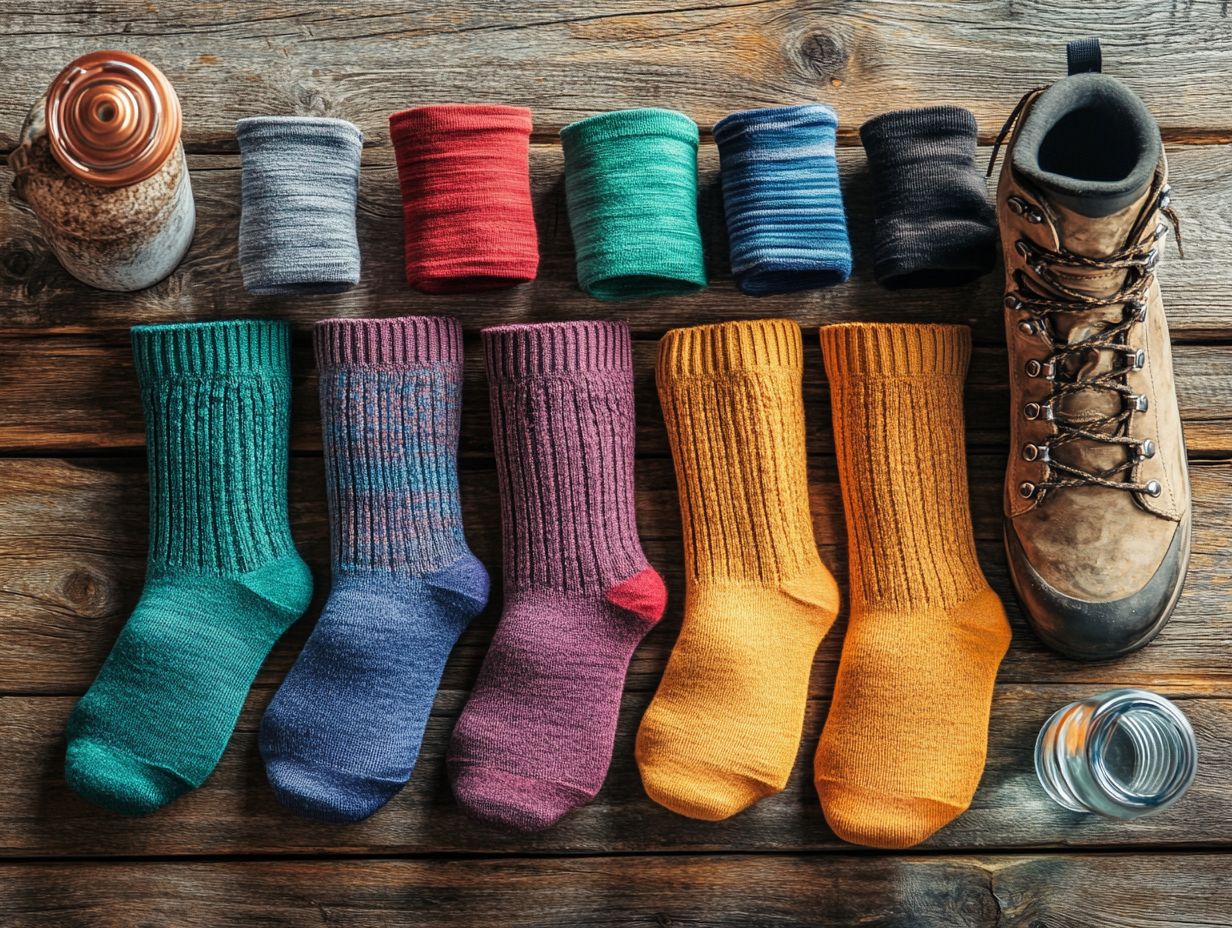
When choosing socks for hiking and camping, opt for moisture-wicking and blister-protecting options. Wool socks are a great choice to ensure comfort on long treks.
High-quality hiking and camping socks often come with advanced moisture control technology. This effectively prevents sweat buildup, keeping your feet dry during strenuous activities.
Brands like Smartwool, Darn Tough, and Bombas offer merino wool socks. This material naturally wicks moisture and provides warmth without bulk.
You ll appreciate the effective cushioning in these socks. It enhances comfort and reduces the risk of blisters, making your journeys much more enjoyable.
Durability is a must! Look for reinforced areas, like those in REI Co-op s trekking socks, designed to handle tough trails while maintaining their shape.
All these features work together to create an optimal outdoor experience with high-quality socks, allowing you to focus on the adventure ahead.
Running and Jogging
For running and jogging, specialized socks are essential. They should fit well and wick moisture to enhance performance and prevent blisters, especially during high-impact activities.
Many runners prefer socks with targeted compression. This helps boost blood circulation and decrease muscle fatigue. Comfort is paramount, and cushioning protects your feet during long runs on hard surfaces.
Brands like Balega and Thorlos provide tailored options, while Feetures offers breathable styles with seamless designs to minimize friction.
Getting the right balance of these characteristics can significantly elevate your running experience. It makes it not just effective, but enjoyable too!
Cold Weather Activities
In cold weather, select socks that keep your feet warm while staying dry. High-quality wool is your best bet, as it insulates against cold and wicks moisture away from your skin.
This combination creates a dry and cozy environment, perfect for your explorations. Merino wool is especially soft and breathable, regulating temperature without the risk of overheating.
If you’re after extra durability, consider socks blended with synthetic fibers. These materials enhance longevity and performance, forming a barrier against the cold while providing cushioning that absorbs impact. This is crucial for hikers, skiers, or anyone venturing into the winter wilderness.
Frequently Asked Questions
What factors should I consider when choosing the right socks for outdoor activities?
When choosing socks, consider material, thickness, padding, and fit. Look for moisture-wicking, breathable fabric suited to the weather and providing cushioning.
What type of material is best for outdoor activity socks?
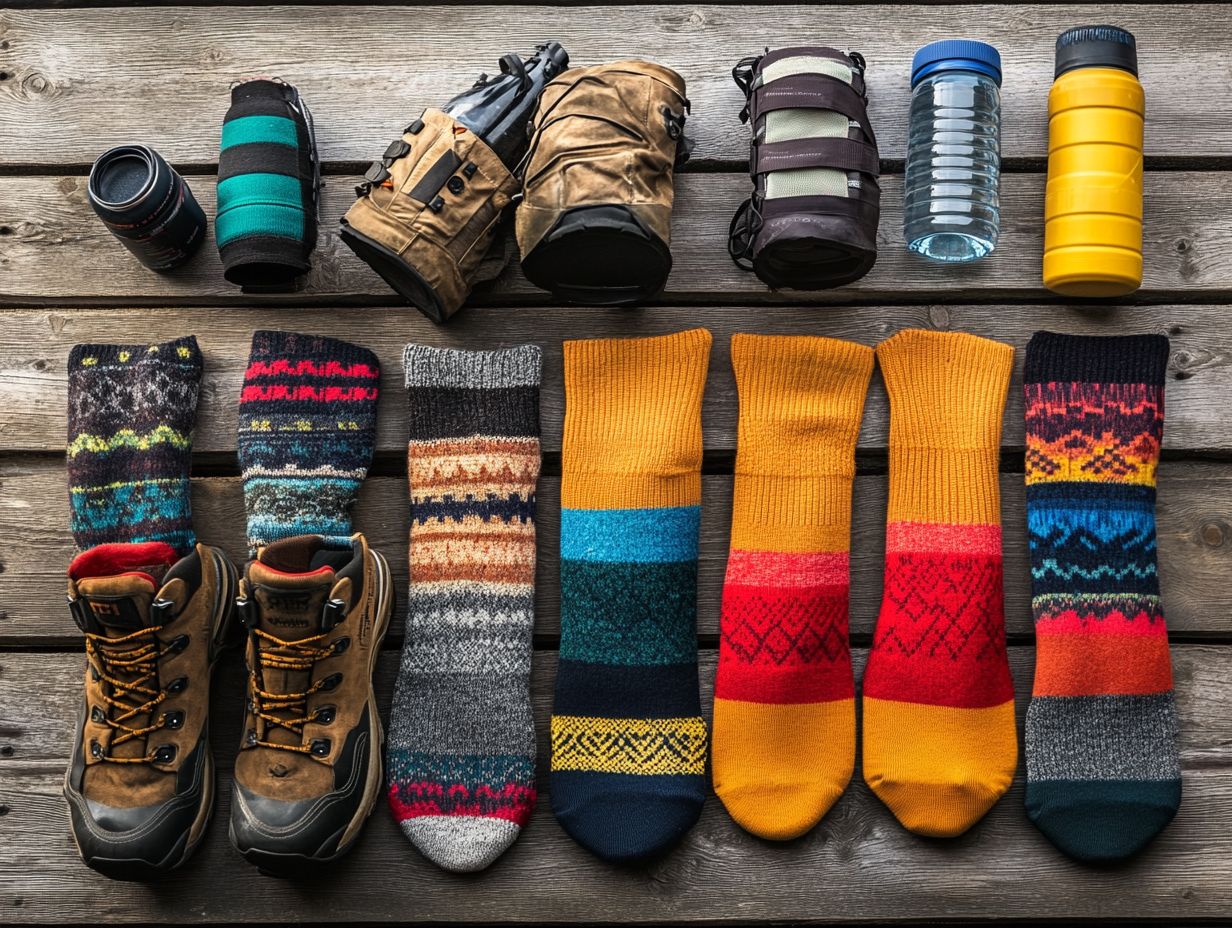
Generally, synthetic materials like polyester, nylon, and spandex are best for outdoor activity socks. They wick moisture and dry quickly, preventing blisters and discomfort. Merino wool is popular for its natural moisture-wicking and odor-resistant properties.
What is the ideal thickness for outdoor activity socks?
The right thickness of outdoor socks varies with the weather and your activity! In colder conditions, thicker socks provide added insulation and warmth. For warmer weather, opt for thinner socks that enhance breathability and prevent overheating.
Do I need specialized socks for specific activities?
Absolutely! Some activities need specialized socks for the best comfort and performance. For instance, hiking socks often feature extra padding and are taller to protect your feet and ankles from rough terrain. Running socks are typically thinner and lighter, promoting breathability and moisture-wicking. Always choose socks specifically designed for your intended activity!
Should I choose socks with cushioning or without?
Select cushioning based on your activity. For high-impact activities like running or hiking, extra cushioning absorbs shock and boosts comfort. For low-impact activities like walking or yoga, thinner socks without cushioning might feel better.
How can I ensure a proper fit for my outdoor activity socks?
To get the perfect fit, always try on socks before buying! Ensure they are snug but not too tight, and check that they don t bunch or slide down when you move. Some socks come in specific sizes, while others offer a range. Finding the right fit is crucial to avoid blisters and discomfort!

